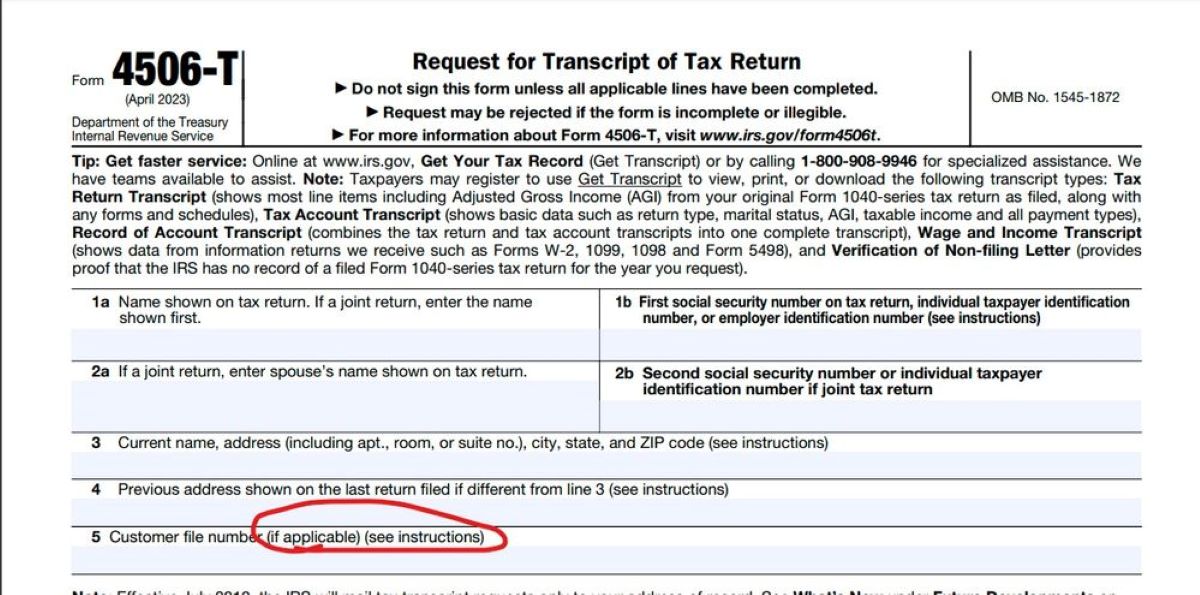

Finance
How To Retain Insurance Customers
Published: November 15, 2023
Learn effective strategies to retain insurance customers in the finance industry, ensuring long-term loyalty and profitability.
(Many of the links in this article redirect to a specific reviewed product. Your purchase of these products through affiliate links helps to generate commission for LiveWell, at no extra cost. Learn more)
Table of Contents
- Introduction
- Importance of Customer Retention in the Insurance Industry
- Understanding Customer Needs and Expectations
- Building Strong Relationships through Superior Customer Service
- Customizing Insurance Solutions Based on Individual Customer Requirements
- Implementing Proactive Communication Strategies to Stay Engaged with Customers
- Offering Loyalty Programs and Incentives to Promote Customer Retention
- Utilizing Data Analytics to Identify At-Risk Customers and Address Their Needs
- Providing Continuous Support and Assistance Throughout the Customer Journey
- Conclusion
Introduction
In the highly competitive insurance industry, attracting and acquiring new customers is crucial for growth and success. However, an equally important aspect of maintaining a thriving insurance business is customer retention. Retaining existing customers not only ensures a steady stream of revenue but also builds trust, loyalty, and a strong reputation.
Customer retention is especially vital in the insurance industry due to the long-term nature of policies and the potential for recurring revenue. Insurance companies invest significant resources in marketing and sales efforts to acquire new customers, but often overlook the importance of retaining their existing customer base.
In this article, we will explore the various strategies and practices that insurance companies can employ to effectively retain their customers. From understanding customer needs and expectations to providing exceptional customer service, implementing proactive communication strategies, and utilizing data analytics, we will delve into the key elements that contribute to successful customer retention.
By focusing on customer retention, insurance companies can not only improve customer satisfaction and loyalty but also reduce costs associated with customer acquisition. A loyal customer base is more likely to refer others, advocate for the company, and renew their policies consistently, ultimately driving growth and profitability.
Now, let’s delve into the importance of customer retention in the insurance industry and explore the strategies that can help insurance companies successfully retain their customers.
Importance of Customer Retention in the Insurance Industry
In the competitive landscape of the insurance industry, customer retention plays a crucial role in the long-term success of insurance companies. While attracting new customers is vital, it is equally important to focus on retaining existing customers. Here are several key reasons why customer retention is essential in the insurance industry:
1. Revenue Stability: Retaining existing customers provides insurance companies with a stable source of revenue. Policies in the insurance sector typically have a long-term nature, extending over several years. By ensuring that customers renew their policies, insurance companies can maintain a consistent revenue stream. In contrast, constantly chasing new customers to replace those who leave can lead to a volatile income stream.
2. Cost-Efficiency: Acquiring new customers can be a costly endeavor for insurance companies. It involves marketing expenses, sales efforts, and administrative overhead. On the other hand, retaining existing customers is more cost-effective. By investing in customer retention strategies, insurance companies can reduce their customer acquisition costs and allocate resources more efficiently.
3. Customer Loyalty: Building customer loyalty is vital in the insurance industry. Loyal customers are more likely to continue renewing their policies and are less inclined to switch to a competitor. Moreover, loyal customers often recommend the insurance company to their friends, family, and colleagues, becoming valuable advocates for driving new business. By focusing on customer retention, insurance companies can foster long-term relationships, enhance customer loyalty, and benefit from positive word-of-mouth referrals.
4. Trust and Reputation: Retaining customers goes hand in hand with building trust and a strong reputation. When customers feel valued, supported, and satisfied with their insurance provider, they are more likely to trust the company and view it as reliable. Happy customers become ambassadors, sharing their positive experiences with others, which boosts the company’s reputation and attracts potential new customers.
5. Cross-Selling Opportunities: Retaining existing customers opens up opportunities for cross-selling and upselling. Insurance companies can leverage their knowledge of customers’ needs and preferences to offer additional policies or services that meet their specific requirements. By providing tailored solutions, insurance companies can increase customer satisfaction, deepen relationships, and maximize revenue potential.
6. Competitive Advantage: In a crowded insurance market, customer retention can provide a significant competitive advantage. By consistently delivering excellent customer service, personalized solutions, and innovative offerings, insurance companies can differentiate themselves from their competitors. Customers are more likely to stay with a company that provides them with value, peace of mind, and a positive overall experience.
Overall, customer retention is essential for insurance companies to maintain financial stability, reduce costs, foster loyalty, and enhance their reputation in the marketplace. In the next sections, we will explore various strategies that insurance companies can implement to retain their customers effectively.
Understanding Customer Needs and Expectations
In order to effectively retain insurance customers, it is crucial for insurance companies to have a deep understanding of their customers’ needs and expectations. By gaining insight into what customers value and what they expect from their insurance provider, companies can tailor their products and services to meet those needs. Here are key strategies for better understanding customer needs and expectations:
1. Conduct Market Research: Insurance companies should conduct thorough market research to gain a comprehensive understanding of their target audience. This includes analyzing demographic data, assessing customer preferences, and identifying trends in the insurance industry. By gathering this information, companies can develop products and services that align with what customers are looking for.
2. Analyze Customer Feedback: Listening to customer feedback is an invaluable source of information for understanding their needs and expectations. Insurance companies should actively seek feedback through surveys, feedback forms, and customer reviews. Analyzing this feedback can provide insights into areas for improvement, identify pain points, and help companies identify gaps in their products or services.
3. Personalize Customer Interactions: Treating customers as individuals and personalizing interactions is a powerful way to understand their unique needs. Insurance companies can leverage customer data to segment their customer base and tailor their communications and offerings accordingly. By personalizing interactions, companies can demonstrate that they understand their customers’ specific circumstances and provide them with the most relevant solutions.
4. Foster Open Communication: Establishing channels for two-way communication is crucial for understanding customer needs and expectations. Insurance companies should encourage customers to provide feedback, ask questions, and voice their concerns. By being accessible and responsive, companies can ensure that they are meeting customer expectations and addressing any issues in a timely and satisfactory manner.
5. Stay Updated with Industry Trends: The insurance landscape and customer expectations are continuously evolving. Insurance companies must stay updated with industry trends, emerging technologies, and changing customer preferences. By staying ahead of the curve, companies can proactively adapt their offerings to meet evolving customer needs and stay competitive in the market.
6. Train and Empower Staff: Frontline staff members play a critical role in understanding and meeting customer needs. Insurance companies should invest in training their staff to effectively listen to customers, ask probing questions, and identify underlying needs. Empowering staff members to make decisions and resolve issues promptly can enhance customer satisfaction and loyalty.
By understanding customers’ needs and expectations, insurance companies can align their products, services, and customer interactions to deliver a superior experience. In the next section, we will explore the importance of providing excellent customer service in retaining insurance customers.
Building Strong Relationships through Superior Customer Service
Superior customer service is a cornerstone of customer retention in the insurance industry. Building strong relationships with customers not only enhances their satisfaction but also increases their loyalty and likelihood of renewing policies. Here are key strategies for providing superior customer service:
1. Prompt and Responsive Assistance: Insurance companies should prioritize prompt and responsive assistance when customers reach out for help or information. This includes promptly answering phone calls, responding to emails, and addressing inquiries through live chat or social media channels. Quick and efficient assistance shows customers that their needs are valued and strengthens the trust they have in the company.
2. Clear and Transparent Communication: Effective communication is crucial for building strong relationships with customers. Insurance companies should clearly communicate policy terms and conditions, coverage details, and any changes or updates. Keeping customers informed and addressing their questions or concerns in a transparent manner fosters trust and satisfaction.
3. Empathy and Understanding: Providing a human touch and demonstrating empathy towards customers can go a long way in building strong relationships. Customer service representatives should actively listen to customer concerns, show understanding, and provide solutions with a compassionate approach. This creates a positive experience and fosters a sense of trust and loyalty.
4. Proactive Support: Going beyond reactive support, insurance companies should be proactive in offering support and assistance to customers. This can include providing reminders for policy renewals, offering guidance on coverage adjustments based on changing circumstances, or sharing valuable resources and educational materials. Proactive support shows customers that their well-being is a priority and strengthens the relationship.
5. Continuous Training and Development: Providing superior customer service requires a well-trained and knowledgeable customer service team. Insurance companies should invest in continuous training and development to ensure that their staff members have the necessary skills and knowledge to serve customers effectively. Regular training sessions and performance evaluations can help identify areas for improvement and maintain a high standard of service.
6. Personalized Assistance: Tailoring assistance to each customer’s specific needs and circumstances is essential for building strong relationships. Insurance companies should collect and utilize customer data to provide personalized recommendations, offers, and solutions. Taking a proactive approach in providing personalized assistance showcases the company’s commitment to meeting individual customer needs.
By consistently delivering superior customer service, insurance companies can build long-lasting relationships with customers. These relationships are built on trust, satisfaction, and a sense of mutual benefit. In the next section, we will explore the importance of customizing insurance solutions based on individual customer requirements.
Customizing Insurance Solutions Based on Individual Customer Requirements
One of the key factors in retaining insurance customers is the ability to customize insurance solutions based on their individual requirements. Every customer has unique needs and circumstances, and tailoring insurance offerings to address these specific needs can significantly enhance customer satisfaction and loyalty. Here are strategies for customizing insurance solutions:
1. Assessing Customer Risk Profile: Insurance companies should conduct a thorough assessment of each customer’s risk profile. This involves analyzing factors such as age, occupation, lifestyle, and previous insurance claims. By understanding the specific risks and needs of each customer, companies can recommend policies with appropriate coverage levels and options.
2. Offering Flexible Coverage Options: Providing customers with flexible coverage options allows them to protect what matters most to them. Insurance companies should offer a range of coverage options, deductibles, and add-ons that customers can choose from to create a policy that aligns with their specific needs and budget. Flexibility in coverage options demonstrates that the company values the individuality of each customer.
3. Bundling Policies: Insurance companies can customize solutions by offering bundled policies that combine multiple types of coverage, such as auto, home, and life insurance. Bundling policies not only simplifies the insurance process for customers but also often leads to cost savings. Creating tailored packages that address various aspects of a customer’s life can strengthen the relationship and increase customer retention.
4. Providing Add-On Coverage: Insurance companies can offer add-on coverage options to supplement base policies. These add-ons can cater to specific needs, such as coverage for high-value items, enhanced liability protection, or additional services. By providing a range of add-ons, insurance companies can meet the unique requirements of customers and enhance the overall value proposition.
5. Regular Policy Reviews: Periodic policy reviews are essential for ensuring that customers’ insurance solutions continue to meet their evolving needs. Insurance companies should initiate regular policy reviews to discuss any life changes, assess coverage adequacy, and recommend adjustments as necessary. These reviews demonstrate a proactive approach in addressing customers’ changing circumstances and reinforce the commitment to customization.
6. Utilizing Technology: Technology plays a vital role in customizing insurance solutions. Insurance companies can leverage data analytics and digital tools to analyze customer data, identify patterns, and recommend tailored insurance solutions. This data-driven approach allows companies to understand customer preferences, anticipate their needs, and provide personalized recommendations.
By customizing insurance solutions based on individual customer requirements, insurance companies can demonstrate their commitment to meeting the specific needs of each customer. This level of customization enhances customer satisfaction and increases the likelihood of continued policy renewals. In the next section, we will explore the importance of implementing proactive communication strategies to stay engaged with customers.
Implementing Proactive Communication Strategies to Stay Engaged with Customers
In the insurance industry, staying engaged with customers through proactive communication is crucial for retaining their loyalty and ensuring their satisfaction. Proactive communication not only keeps customers informed but also strengthens the relationship between the insurance company and its customers. Here are key strategies for implementing proactive communication:
1. Regular Policy Updates: Insurance companies should provide regular updates to customers regarding their policies. This can include notifications about policy renewals, changes in coverage, or updates to terms and conditions. By keeping customers informed, insurance companies demonstrate their commitment to transparency and build trust.
2. Timely Claims Assistance: Handling claims efficiently is an opportunity for insurance companies to communicate proactively with their customers. Providing updates on the status of claims, processing timelines, and any additional requirements helps put customers at ease during what can often be a stressful time. Timely and transparent communication throughout the claims process demonstrates a customer-centric approach.
3. Newsletters and Educational Material: Insurance companies can send newsletters or educational material to their customers. These communications can provide valuable information on topics such as risk management, policy features, and industry trends. By sharing insights and knowledge, insurance companies position themselves as trusted advisors and continually engage customers with relevant content.
4. Reminders and Renewal Notices: Proactively reminding customers about policy renewals ensures they are aware of important deadlines. Sending renewal notices well in advance, along with options for policy adjustments or upgrades, allows customers to make informed decisions. Regular reminders demonstrate that the insurance company is proactive and interested in keeping customers covered.
5. Personalized Offers and Discounts: Insurance companies can use proactive communication to offer personalized discounts or incentives to customers. This can include loyalty rewards, bundling discounts, or special promotions based on customer history or needs. Personalized offers show that the company values the customer’s business and encourages continued engagement.
6. Utilizing Multiple Communication Channels: Insurance companies should leverage multiple communication channels to reach customers effectively. This includes utilizing email, SMS, social media platforms, and mobile apps. By diversifying communication channels, companies can cater to customers’ individual preferences and engage with them on their preferred platforms.
7. Gathering Customer Feedback: Proactive communication also involves actively seeking customer feedback. Insurance companies can conduct surveys or feedback campaigns to understand customer satisfaction levels, identify areas for improvement, and address concerns promptly. Gathering feedback demonstrates a commitment to continuous improvement and ensures that customer needs are met.
By implementing proactive communication strategies, insurance companies can stay engaged with their customers, foster trust, and strengthen the customer-company relationship. Proactive communication not only keeps customers informed but also demonstrates the company’s commitment to their well-being. In the next section, we will explore the importance of offering loyalty programs and incentives to promote customer retention.
Offering Loyalty Programs and Incentives to Promote Customer Retention
One effective strategy for promoting customer retention in the insurance industry is to offer loyalty programs and incentives. By providing additional benefits and rewards to loyal customers, insurance companies can incentivize them to stay with the company and renew their policies year after year. Here are key strategies for offering loyalty programs and incentives:
1. Loyalty Rewards: Insurance companies can implement loyalty programs that reward customers for their continued patronage. This can include tiered rewards based on the length of their tenure, such as premium discounts, increased coverage limits, or reduced deductibles for long-standing customers. By acknowledging and appreciating customer loyalty, companies encourage customers to remain committed to the company.
2. Referral Programs: Offering incentives for customer referrals is a powerful way to generate new business while rewarding existing customers. Insurance companies can provide discounts or rewards to customers who refer friends, family, or colleagues to the company. Referral programs not only promote customer retention but also help expand the customer base through positive word-of-mouth marketing.
3. Add-On Benefits: Providing additional benefits or perks to loyal customers can enhance their overall experience. Insurance companies can offer benefits such as priority claims assistance, 24/7 emergency assistance, or access to exclusive services. These add-on benefits not only provide value to customers but also cultivate a sense of exclusivity and appreciation for their loyalty.
4. Premium Discounts: Offering discounted premiums to customers who renew their policies can be a compelling incentive for retention. Insurance companies can provide loyalty discounts that gradually increase over time or offer discounts when customers bundle multiple policies. These discounts can motivate customers to stay with the company and enjoy the cost savings associated with continued coverage.
5. Enhanced Coverage: Rewarding loyal customers with enhanced coverage options demonstrates the company’s commitment to their well-being. Insurance companies can provide additional coverage benefits or higher coverage limits to customers who have remained loyal over a specified period. Enhanced coverage not only offers greater peace of mind but also reinforces the value customers receive for their long-term commitment.
6. Personalized Offers: Customizing offers based on individual customer preferences and needs can further incentivize customer retention. Insurance companies can analyze customer data to identify patterns and tailor offers accordingly. Personalized offers, such as discounts on coverage upgrades or relevant add-ons, create a sense of exclusivity and demonstrate the company’s understanding of the customer’s specific requirements.
By offering loyalty programs and incentives, insurance companies can promote customer retention, foster loyalty, and strengthen the customer-company relationship. These programs and incentives not only reward customers for their continued business but also create a sense of value and appreciation. In the next section, we will explore the importance of utilizing data analytics to identify at-risk customers and address their needs.
Utilizing Data Analytics to Identify At-Risk Customers and Address Their Needs
Data analytics plays a vital role in customer retention strategies for insurance companies. By leveraging data and analytics tools, insurance providers can identify at-risk customers and proactively address their needs. Here are key strategies for utilizing data analytics in identifying at-risk customers:
1. Data-driven Segmentation: Insurance companies can segment their customer base based on various factors, including demographics, policy history, and claims data. By analyzing these segments, insurers can identify patterns and trends that indicate potential customer churn. This data-driven segmentation helps prioritize efforts towards retaining high-value, at-risk customers.
2. Predictive Modeling: Data analytics allows insurance companies to build predictive models that identify customers who are likely to lapse or switch to a competitor. By analyzing historical data, customer behavior patterns, and external factors, these models can forecast the probability of churn. Identifying at-risk customers in advance enables proactive intervention to prevent loss of business.
3. Monitoring Policy Usage: Analyzing customer data can help insurance companies identify customers who underutilize their policies. For example, those who have not filed a claim or have not updated their coverage for an extended period may be at risk of churn. By monitoring policy usage, insurers can proactively reach out to these customers, assess their needs, and offer appropriate policy adjustments or coverage recommendations.
4. Sentiment Analysis: Utilizing natural language processing and sentiment analysis techniques, insurance companies can analyze customer feedback, reviews, and social media mentions. This analysis helps identify customers who express dissatisfaction or negative sentiment towards the company or its services. By promptly addressing their concerns, insurers can mitigate potential churn and improve customer satisfaction.
5. Cross-Selling and Upselling Opportunities: Data analytics enables insurers to identify cross-selling and upselling opportunities by analyzing customer purchase patterns and preferences. By understanding customers’ needs and offering relevant additional coverage or policy upgrades, insurance companies can increase customer satisfaction, enhance their overall experience, and reduce the likelihood of them seeking alternate options elsewhere.
6. Proactive Communication: Data analytics allows insurers to tailor their communication strategies based on customer preferences, behavior, and life events. By leveraging customer data, insurers can send personalized messages, reminders, or notifications to engage customers and address their specific needs. Proactive communication demonstrates attentiveness, strengthens the customer relationship, and reduces the risk of attrition.
By utilizing data analytics to identify at-risk customers and address their needs, insurance companies can significantly improve customer retention. The ability to proactively intervene and offer personalized solutions demonstrates a customer-centric approach, leading to increased satisfaction and loyalty. In the next section, we will explore the importance of providing continuous support and assistance throughout the customer journey.
Providing Continuous Support and Assistance Throughout the Customer Journey
In the insurance industry, providing continuous support and assistance to customers throughout their journey is crucial for fostering satisfaction, trust, and loyalty. Insurance companies should aim to be present for their customers at every stage, from onboarding to policy renewal. Here are key strategies for providing continuous support and assistance:
1. Onboarding and Orientation: The onboarding process is the first impression customers have of an insurance company. Clear and comprehensive onboarding materials, including welcome packs, policy explanations, and contact information, help customers understand what to expect and how to navigate their policies. Providing an easy and supportive onboarding experience sets the foundation for a positive customer journey.
2. Responsive Customer Service: Insurance companies should prioritize responsive customer service throughout the customer journey. Promptly addressing customer inquiries, concerns, and claims is crucial for maintaining customer satisfaction. Utilizing multiple communication channels, such as phone, email, and live chat, ensures that customers can easily reach out for assistance whenever needed.
3. Proactive Policy Reviews: Regular policy reviews allow insurance companies to assess customers’ changing needs and ensure that their policies remain adequate and relevant. Proactively reaching out to customers to discuss any updates or adjustments, such as coverage enhancements or policy discounts, demonstrates a commitment to ongoing support and protection.
4. Claims Assistance: Assisting customers during the claims process is a critical area where continuous support is paramount. Insurance companies should provide clear instructions and guidance on how to file a claim, transparently communicate the claims progress, and promptly settle claims. Prioritizing claims assistance helps customers navigate potentially stressful situations and strengthens their trust in the insurer.
5. Education and Resources: Providing educational resources and informative content helps customers better understand insurance terms, coverage options, and risk management. Insurance companies can offer guides, articles, and online resources to empower customers to make informed decisions regarding their policies. By providing valuable information, insurers position themselves as trusted advisors and create a sense of ongoing support.
6. Proactive Policy Renewal: Prior to policy renewal periods, insurance companies should proactively reach out to customers with reminders and policy updates. Offering personalized recommendations, along with competitive pricing or loyalty discounts, shows customers that the company values their business and wants to ensure their continued satisfaction. Making the renewal process seamless and efficient reinforces the ongoing support and assistance provided.
By providing continuous support and assistance throughout the customer journey, insurance companies foster strong relationships, enhance satisfaction, and increase customer retention. Being readily available, proactive, and attentive to customers’ needs ensures that they feel supported and valued. In the final section, we will summarize the key points discussed in this article.
Conclusion
In the competitive landscape of the insurance industry, customer retention is vital for long-term success. By implementing effective strategies and practices, insurance companies can retain their customers, enhance loyalty, and drive growth. Throughout this article, we have explored various key elements involved in customer retention in the insurance industry.
We began by highlighting the importance of customer retention and the benefits it brings to insurance companies, including revenue stability, cost-efficiency, and the development of a loyal customer base. Understanding customer needs and expectations is crucial in customizing insurance solutions that meet their individual requirements. By providing superior customer service, insurance companies can build strong relationships with customers, while proactive communication strategies keep customers engaged and informed.
Loyalty programs and incentives play a significant role in promoting customer retention. By rewarding loyal customers with exclusive benefits and discounts, insurance companies foster continued loyalty and demonstrate their value. Utilizing data analytics helps identify at-risk customers and allows for personalization of offerings and interventions tailored to their needs.
Continuous support and assistance throughout the customer journey are essential for customer satisfaction and retention. By providing a seamless onboarding experience, responsive customer service, proactive policy reviews, and valuable educational resources, insurance companies can continuously engage and support their customers. Finally, proactive policy renewal reminders and personalized offers further solidify the customer-company relationship.
In closing, insurance companies must prioritize customer retention strategies to thrive in a competitive marketplace. By focusing on understanding customer needs, providing exceptional service, customizing insurance solutions, staying engaged through proactive communication, offering loyalty programs, utilizing data analytics, and providing continuous support, insurance companies can build strong relationships, ensure long-term customer loyalty, and drive sustainable growth.














